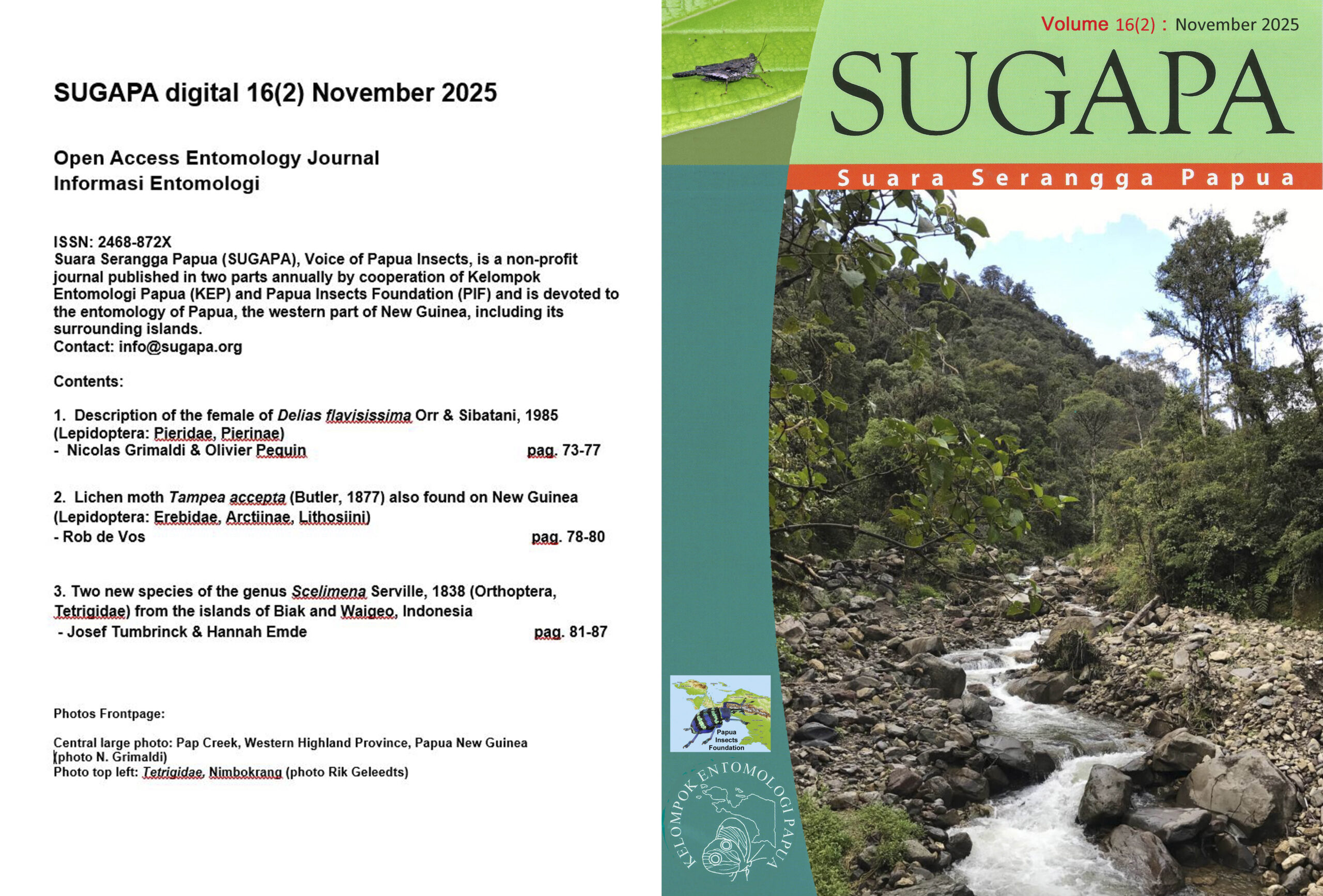2.Hann Kawulur.
Surveying Papilionoidea at the Archipelago Moor and Mambor, Nabire
From 7th
July till 6th August 2003 a survey was held by Hanna Kawulur, Henk van
Mastrigt, Edy Rosariyanto and six students from the Cenderwasih University
(UNCEN), at three islands at the archipelago of Moor and six islands at the
archipelago of Mambor.
At the three islands of the archipelago of Moor 90 species were recorded: at
Moor 68, at Ratewi 74 and at the small island of Nuta Uti 29. At the six
islands of the archipelago of Mambor 75 species were recorded, including 20
species which were not recorded at the archipelago of Moor: at Mambor 43, at
Here 24, at Mowirin 43, at Hariti 62, and at the very small islands of Ahee and
Warahire respectively 8 and 2 species.
Some special notes concern Papilio
albinus and Graphium codrus (only
at Moor), Cepora aspasia (at
four islands), Bindahara phocides in
large numbers at the coast of Moor and Mambor, Hypochrysops apelles was common at Moor, Mowirin and
Hariti, Idea durvillei (common
at Hariti), Parthenos tigrina (only
at Warahire) and P. aspila (at
nearly all other islands), Euploea phaenareta (with very many
individuals at Nusa Uti – males only).
Download PDF:

 Open Access Entomology Journal
Open Access Entomology Journal


